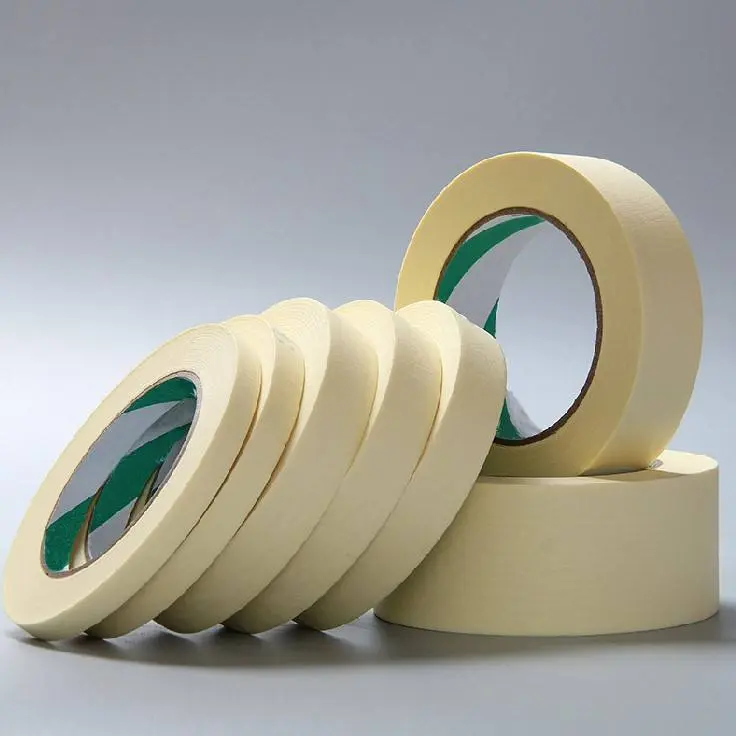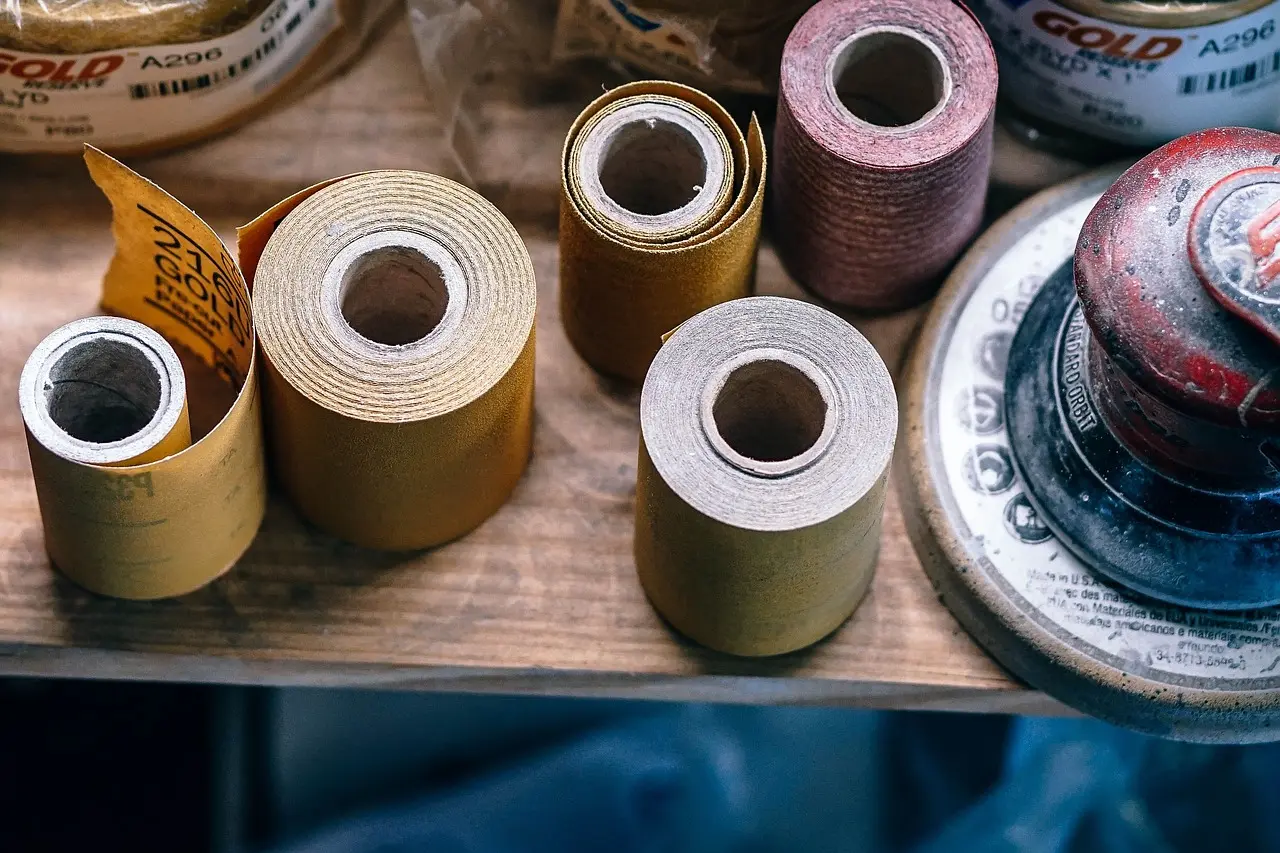Introduction
Masking tape, often referred to as painter’s tape, is a vital consumable for numerous industries. What was once merely a household tool has evolved into a versatile industrial solution used across manufacturing, construction, automotive, packaging, and creative sectors. From creating precise paint lines on architectural projects to serving as a labeling tool in warehousing and logistics, masking tape has proven to be indispensable in both heavy-duty and precision-based tasks.
In this comprehensive guide, we explore everything industrial buyers and commercial users need to know about masking tape—including its technical structure, types, industry-specific applications, and key commercial advantages.
What is Masking Tape?
Masking tape is a type of pressure-sensitive adhesive (PSA) tape constructed with a thin and easily tearable backing material—most commonly crepe paper—coated with a specially formulated adhesive. The primary design allows for temporary adhesion, ensuring easy application and clean removal without surface damage or sticky residue.
Depending on the intended use, the adhesive strength, temperature resistance, and backing materials can vary widely. For commercial-grade tapes, properties such as UV resistance, solvent resistance, and thermal stability are enhanced for professional use.
Industrial and Professional Uses of Masking Tape
Masking tape’s functionality spans multiple industries. Here’s a breakdown of how businesses integrate masking tape into operations:
1. Painting and Decorating Services
Painting contractors and decorators rely heavily on high-precision masking tape to produce sharp lines and professional finishes. Common use cases include:
- Masking trims, baseboards, and window edges during interior painting
- Defining color zones in mural and accent wall projects
- Edge protection during spray painting in automotive refinishing
Blue masking tape is particularly favored in this field due to its UV resistance and low tack, making it ideal for use on delicate surfaces like freshly painted walls or treated wood.
2. Automotive and Industrial Coating
In auto body shops and industrial painting lines, high-temperature masking tape is critical. These tapes are engineered to withstand:
- Baking cycles in paint booths (often up to 120–150°C)
- Contact with solvents, clear coats, and base coats
- Clean removal after prolonged exposure to heat and chemicals
Specialty green or yellow automotive masking tapes are commonly used for these high-performance requirements.
3. Construction and Renovation
Contractors and construction managers use masking tape for:
- Surface protection during tiling, flooring, or drywall installation
- Temporary labeling of fixtures and panels
- Holding lightweight parts in place during assembly or inspection
For dusty and rugged environments, heavier crepe tapes or reinforced masking tapes offer enhanced durability.
4. Manufacturing and Electronics
In electronics and assembly lines, masking tape can:
- Isolate components during soldering
- Temporarily bundle wires and parts
- Serve as a layout marking tool
Here, anti-static or high-temperature variants may be used, depending on the environment.
5. Packaging and Labeling
For companies looking for eco-friendly and easily removable temporary labels, masking tape is a cost-effective solution. Many businesses use it for:
- Box sealing for light packaging
- Product labeling during internal logistics
- Color-coding batches or inventory
The ease of writing on masking tape makes it an excellent choice for temporary, customizable identifiers.
6. Arts, Crafts, and Creative Industries
In schools, studios, and handmade product workshops, masking tape enables:
- Precision masking in artwork and screen printing
- Temporary bonding during project assembly
- Labeling and layout design
Masking tape is also a favorite for event organizers and set designers who need to mark positions or layout spaces without leaving permanent marks.
Understanding Different Types of Masking Tape
Commercial buyers must differentiate between various types of masking tapes tailored for specific applications. Here are the most common types categorized by their core attributes:

a) General Purpose Masking Tape
- Ideal for everyday use
- Easy to tear and remove
- Available in various colors (white, black, beige)
b) Blue Painter’s Tape
- UV-resistant
- Low tack, clean removal from sensitive surfaces
- Perfect for long-term indoor/outdoor painting
c) High-Temperature Masking Tape
- Withstands elevated temperatures (up to 150°C)
- Used in automotive and industrial painting
- Often color-coded (e.g., green or yellow)
d) Colored Masking Tape
- Used for coding and creative decoration
- Available in multiple bright colors
- Ideal for arts & crafts, warehouse labeling, and branding
e) Liquid Masking Tape
- Brushable application for intricate surfaces
- Peels off after drying
- Often used in model painting, window framing, or glass etching
f) Specialty Masking Tape Dispensers
- For high-volume environments (e.g., assembly lines or workshops)
- Improve productivity and safety
- Reduce waste with precise tape length control
Masking Tape vs. Painter’s Tape: Key Differences
While often used interchangeably, there are critical distinctions:
| Feature | Masking Tape (General) | Painter’s Tape (Specialized) |
|---|---|---|
| Adhesion Level | Moderate to high | Low tack |
| Residue | May leave residue on delicate surfaces | Clean removal guaranteed |
| Surface Compatibility | Wood, plastic, metal, cardboard | Delicate walls, glass, trims |
| UV Resistance | Limited | Designed for UV exposure |
| Color | Usually beige, black, or white | Often blue or green |
Recommendation for Buyers: If your project involves delicate surfaces, freshly painted walls, or extended exposure to sunlight, painter’s tape is the superior choice. For all-purpose bundling, sealing, or marking, general masking tape offers better value.
Key Benefits for Business and Industrial Use
Investing in high-quality masking tape delivers measurable benefits:
- Efficiency: Reduces rework and cleanup during painting or coating jobs
- Cost Control: Minimizes material waste and labor costs
- Productivity: Enables faster workflows on assembly lines or workstations
- Surface Protection: Guards valuable surfaces against scratches, stains, or paint
- Brand Adaptability: Some tapes can be custom printed for brand consistency
Choosing the Right Masking Tape Supplier
When sourcing masking tape for commercial purposes, consider:
- Adhesion Level: Match adhesive strength with the surface material and duration of use.
- Temperature Resistance: Crucial for industrial painting and heat-exposed processes.
- Tear Resistance: Reinforced tapes reduce failure in high-friction environments.
- Surface Compatibility: Avoid damage by selecting tape suitable for the material.
- Certifications: Look for ROHS, ISO, or REACH certifications depending on industry requirements.
Suppliers should also offer customization options—such as branded printing, custom widths, and colors—to match company specifications or branding guidelines.
Conclusion
Masking tape may seem like a simple tool, but in the commercial and industrial world, it plays a strategic role across dozens of applications. Whether you’re running a painting business, managing a warehouse, or producing consumer goods, the right masking tape can improve efficiency, reduce costs, and elevate the quality of your output.
For businesses aiming to streamline operations and maintain professional standards, investing in the right type of masking tape is not a minor decision—it’s a smart business move.

Products
Rich variety of adhesive tape
